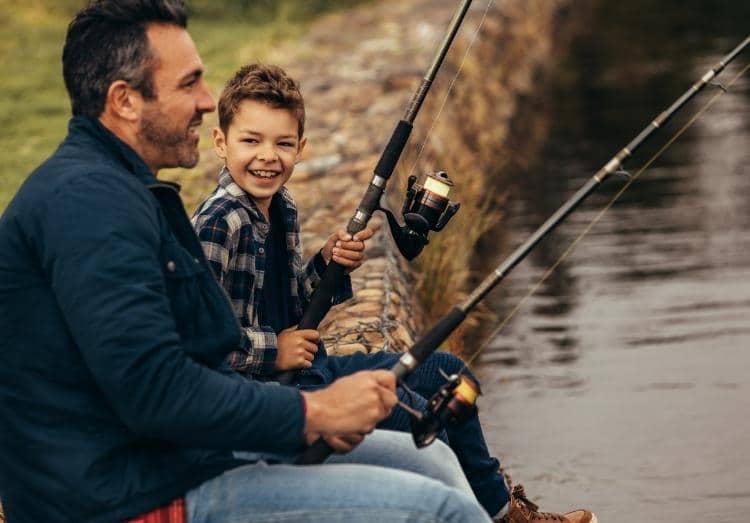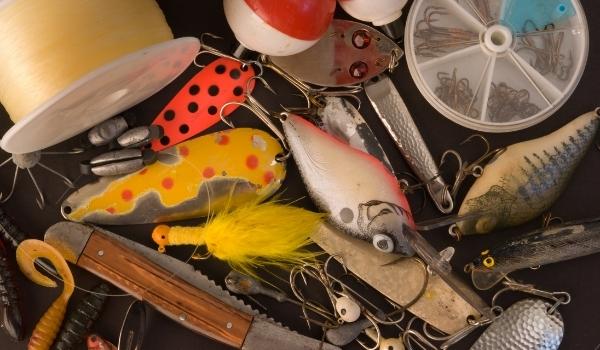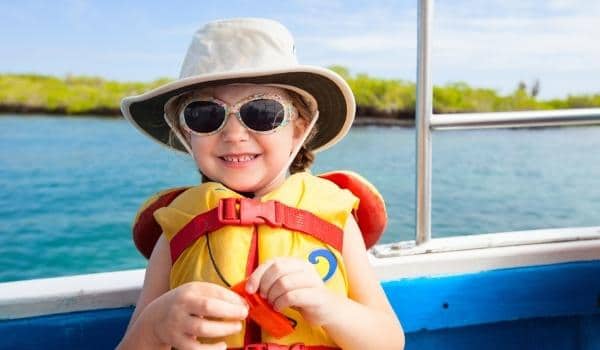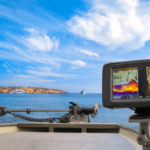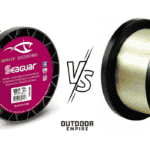Fishing is a tradition that has been passed down through generations and can be an incredible bonding experience. But these experiences don’t just happen on their own. They take thought and preparation.
To start fishing with your kids, you’ll need a fishing rod and reel, some basic tackle, and bait. You will also want to bring snacks and a healthy dose of both patience and enthusiasm in order to have a successful fishing trip with your kids.
We’ve done the hard work for you and have made some simple lists.
Read on for some helpful details and examples of how to make your fishing trips both successful and memorable. You’ll want to create happy memories so that your kids will want to go again and again.
Basic Gear That You’ll Need When Taking Kids Fishing
When you take kids fishing, start by just taking the basics. Until your kids really start getting serious about catching fish, just bring a fishing rod and a simple tackle box. Kids will be excited by whatever you bring, but you don’t want it to be too overwhelming (or messy)!
Here’s a simple list of what you could include in your gear and tackle box:
- Fishing rod and reel
- Extra fishing line
- Needle nose pliers to remove hooks from the fish’s mouth
- Bobbers to keep your bait at the right depth (and more importantly for this trip, to help your little ones see when a fish is on their line)
- Lures or bait to attract the fish
- Swivels to keep your line from twisting and change bait more easily
- Barbless hooks of different sizes for different fish
- Ruler to measure your catches
- Knife to cut line or other debris
- Flashlight because it can never be too bright for nimble work
- First-aid kit because you need to protect yourself (and your kids) from cuts and infections
- Sunscreen because you’ll be exposed
- Wipes for washing dirty or sticky hands
- Hand sanitizer for cleaning hands before snack time or going home
Just about any spinning or spincasting rod and reel will do to get started. But avoid a baitcaster at first. They take a little finesse to use and new youth anglers will probably get frustrated as they end up untangling their line all day.
Use barbless hooks so if or when the kid hooks their finger or clothes, it’s slightly less of an ordeal to get it out.
When it comes to things like hook sizes and baits, the specific types you need will depend on where you’re going. The best thing you can do is to go to a bait shop or sporting goods store near the location you’re going to fish. Ask the guy that works there what to use.
Avoid complicated baits, but a few different bait options will make it fun. If you’re fishing for trout get a spinner, barbless hooks, Power Bait, and worms.
When in doubt, get some #4 barbless hooks and nightcrawlers.
Fishing on a Boat? Add These Items to Your List:
When you’re fishing from a boat, there are a few more safety hazards and logistics to consider. It’s always best to be overprepared, so add a few things to the boat before you go.
Here’s a simple list of things to add when fishing from a boat:
- Life jackets for all, making sure to have the right size for all children
- Hats to protect little faces from the sun
- Spare dry clothes
- Jackets
- Towels
Life jackets are the most important, and not just because it’s the law. This is another chance to model safety for your kids. Talk to them about why life jackets are mandatory on boats, and what to do if they fall in the water.
Let Kids Explore the Tackle Box
You know that as soon as they see that fun little box, your kids will want to pull everything out and see what it’s all about. Rather than letting the little buggers destroy everything, tell them that they can look but not touch anything…yet.
Once they’ve looked with just their eyes, let them hold and discover a few of the (safe) items. You can use their excitement to teach them what the different items are for. Try to let them handle and become familiar with as many things as possible. This will keep them interested and motivated, and they’ll also feel empowered.
Related: What Kids Should Wear Fishing (Printable Checklist)
How To Have a Successful Fishing Trip with Kids
Before you can teach anyone else to fish, you’ve got to know the basics yourself. This is especially true when teaching kids. If all you know are the basics, just teach the basics. As you learn and become more confident, you can teach your kids more and more.
Keep Kids Engaged
When you’re out teaching kids how to fish, it is not the time to try something new. Stick with what you know well and make that fun and engaging for the kids.
Kids need to know basic rules and regulations, but they don’t need to know all the specifics and details right away. Teach them about size regulations by helping them measure each fish they catch. Teach by doing, not just talking.
While your line is in the water, ask your kids questions about what’s going on around them. Ask questions that help them notice the wind, the sounds, what their line (or bobber) is doing, etc.
Encourage your kids to ask whatever questions they have. They may surprise you with what they notice or don’t understand. Get excited about what your kids are talking about. When kids offer their opinions on something, it is a way for them to take ownership of the situation.
Keep Kids Safe
An important concept that needs immediate attention is safety. You don’t need to scare the poor youngsters, but you do want them to understand that safety is #1.
There will be many safety rules to practice with kids. Start with the most basic (and important!) and then move on to technical things.
You might start by showing them how to safely walk around the water, whether on a dock, boat, or the shore. Let them test out different surfaces and show them how to take little steps and watch where they’re going.
Rather than assuming that your child understands this, go ahead and model for them so they can see it before they try it on their own.
Once you start fishing, there will be a whole host of safety hazards: hooks, fishing line tangles, bait that looks tasty to youngsters, etc. But never fear! By slowing down and taking one thing at a time, kids will quickly learn how to stay safe.
After all, they’ll understand that in order to get to go fishing again they’ll need to follow the rules. And you can bet they’ll be motivated! So take some time to teach them how to safely handle a rod, line, and hook, and how to safely cast and pull in a fish. They’ll feel so grown up and excited and all your hard work and dedication will be worth it!
Keep It Short
It’s important, too, to be conscious of children’s attention span. Plan your first hands-on experience to be a short one and go during a good time of day. There is no need for a long drive, a long boat ride, or hours holding a rod. This could leave a bad taste in your mouth (and your kids’s) and you don’t want that.
By keeping the outing short and sweet, you won’t overextend anyone and you’ll leave the kids wanting more. Try it out for an hour, then maybe next time go for two. Having simple snacks nearby may extend your window, so stuff your pockets with a couple of surprises.
Keep Your Cool
Finally, your patience is going to be key. Kids need positive reinforcement, especially when they make mistakes. You will be cast in the uber-important role of the empathetic expert. Ask yourself what you want the young ones to take away from the experience besides the fishing.
Indeed, you want them to consider it a bonding experience, even if they’re too young to be able to define it. When it’s over, and you ask them if they want to go again, you’ll want to hear that resounding, “YES!” So much of that will depend on the feelings they have when they’re with you. So take some deep breaths and feel the love!
What Is a Good Age To Take a Child Fishing?
You can take your child fishing as soon as they’re old enough to hold a rod and follow simple rules. For most kids, this will be around age 3 or 4. If fishing is of utmost importance to you, go ahead and take them out sooner.
If your kid has a hard time sitting still or following directions, you might want to wait until age 5 or 6. You know your kid best, so be realistic and consider when they could have a good time while being safe.
What Are the Rules for Fishing With Kids?
Rules and regulations for fishing vary by state. Every state has some licensing rules in order to fish. Generally, kids under a certain age (often 14, 16 or 18) are allowed to fish for free and without a license. In some states, however, kids can fish without a license as long as they’re with an adult who is carrying a fishing license. Check your local fish and game site for rules in your state.
There are also rules by state about catch limits, catch and release protocols, and size details. These vary, of course, but the good news is that you don’t have to know the fishing codes for the entire country, only your location.
Before you take the kids out, make it a point to review these rules so that you can pass them along. For instance, if you catch a perch in your local pond and it’s too small to keep, don’t simply throw it back in silence. Rather, explain why you aren’t allowed to keep it.
When it comes to what you need to start fishing with kids, your patience and enthusiasm are your biggest assets. That coupled with your fully stocked tackle box and pockets of snacks, you’ll be all set for a great day of fishing with your kids.
For more gear tips on getting started with fishing, check out our Beginner’s Fishing Gear Guide.

